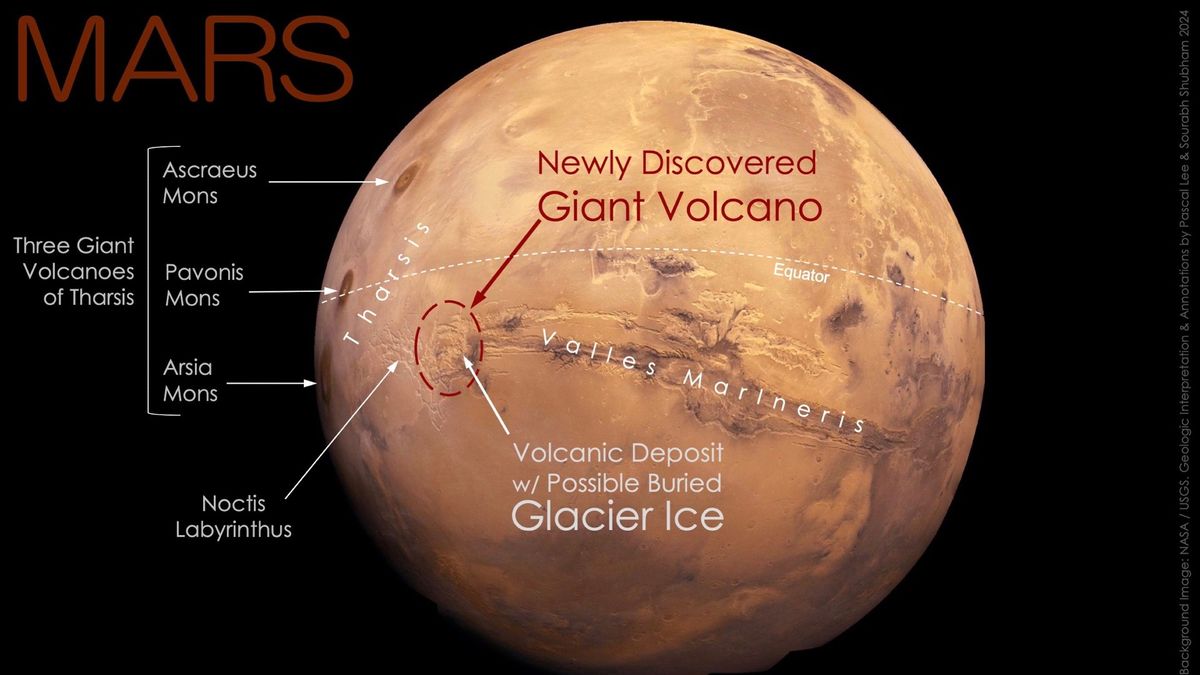A Monumental Discovery on Mars
Astronomers have recently identified a colossal volcano on Mars that had eluded detection for more than fifty years. This enormous geological structure measures about 280 miles across and rises approximately 29,600 feet, positioning it in the eastern portion of Mars’ Tharsis volcanic province, close to the planet’s equator. The discovery was announced at a scientific gathering in Texas, which took place from March 11 to March 15, 2024.
Potential for Astrobiological Studies
Adjacent to the base of this gigantic Martian volcano, researchers have discovered evidence of what appears to be ancient glacier ice, buried beneath the Martian surface. This find significantly heightens the possibility of life and has ignited a flurry of interest in potential astrobiological studies. The presence of both an ancient volcano and glacial ice at the same site provides an exceptional opportunity to further our understanding of the Red Planet’s geological history and its capability to support life.
Implications for Future Martian Exploration
The combination of significant volcanic activity and glacial remnants not only offers insights into Mars’ dynamic past but also marks this location as a key interest for future exploratory missions. This site could yield vital data on the planetary conditions that might have once supported life, making it a prime target for upcoming robotic and manned missions to Mars. The ongoing analysis of this site will help to refine our strategies for studying other celestial bodies in the solar system as well.
